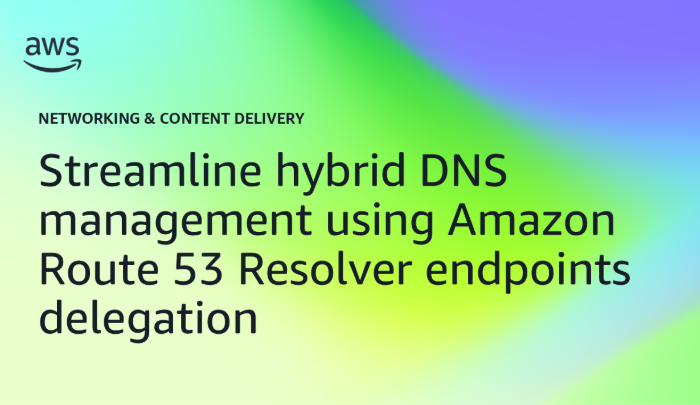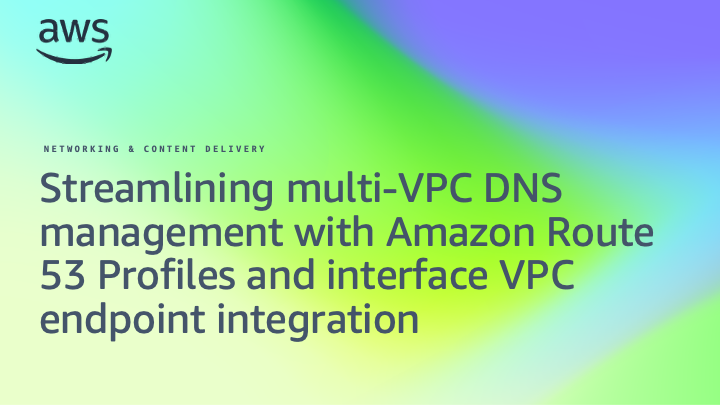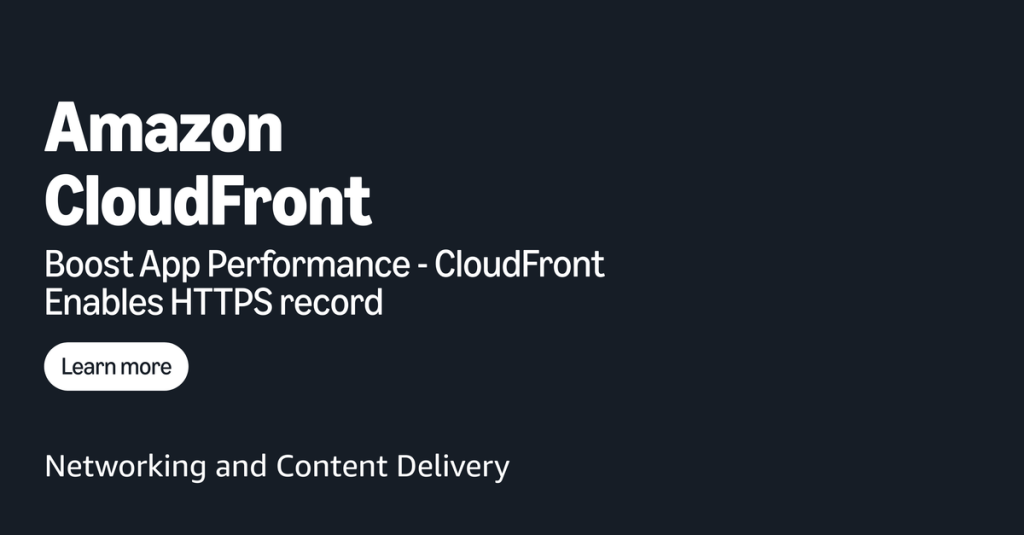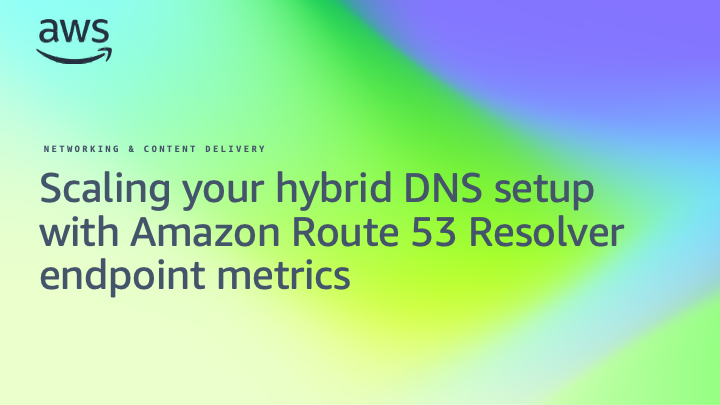Networking & Content Delivery
Category: Amazon Route 53
Announcing Amazon Route 53 Accelerated Recovery for managing public DNS records
AWS announced the launch of accelerated recovery for managing public Domain Name System (DNS) records, a new Amazon Route 53 feature that targets a 60-minute Recovery Time Objective (RTO) for your DNS operations in the unlikely event of service disruptions in the N. Virginia Region (us-east-1). This feature ensures continuity for your critical workloads by […]
Introducing flat-rate pricing plans with no overages
Today, Amazon Web Services (AWS) is launching flat-rate pricing plans with no overages for website delivery and security. The pricing plans, available with Amazon CloudFront, combine global content delivery (CDN) with multiple AWS services and features into a monthly price with no overage charges, regardless of whether your website or application goes viral or faces […]
Protect your Amazon Route 53 DNS zones and records
Amazon Route 53 powers mission-critical DNS services for millions of applications worldwide, and protecting your DNS infrastructure is an important step for securing your applications.. An unintended DNS configuration change or deletion can disrupt the availability of your applications and impact your business operations causing lost revenue and more. To help safeguard your DNS from […]
Streamline hybrid DNS management using Amazon Route 53 Resolver endpoints delegation
Introduction We recently announced that Amazon Route 53 Resolver Endpoint supports Domain Name System (DNS) delegation, allowing you to delegate authority for a subdomain from your on-premises infrastructure to Route 53 and vice versa. Previously, to implement DNS delegation and maintain a unified private DNS namespace across on-premises and in Amazon Web Services (AWS) environments, […]
Enhancing Pinterest’s organizational security with a DNS firewall: Part 2
This post was authored by Ali Yousefi, Senior Security Software Engineer on the Infrastructure Security Team at Pinterest Introduction In part 1 one of this two-part blog series, we demonstrated how Pinterest gained visibility into DNS traffic originating from its VPCs by enabling Amazon Route 53 Resolver query logs across its Amazon Web Services (AWS) […]
Enhancing Pinterest’s organizational security with a DNS firewall: Part 1
This post was authored by Ali Yousefi, Senior Security Software Engineer on the Infrastructure Security Team at Pinterest Introduction Network security has become an increasingly important focus area in cloud security as more organizations shift to the cloud. Organizations can take an active approach in protecting themselves and their data from various threats by strengthening […]
Securing hybrid workloads using Amazon Route 53 Resolver DNS Firewall
Since its launch in 2021, Amazon Route 53 Resolver DNS Firewall has enabled Amazon Web Services (AWS) users to monitor and control outbound DNS queries originating from their Amazon Virtual Private Cloud (Amazon VPC) resources. Configuring domain filtering rules in Route 53 Resolver DNS Firewall helps you mitigate security threats such as data exfiltration through […]
Streamlining multi-VPC DNS management with Amazon Route 53 Profiles and interface VPC endpoint integration
Managing DNS configurations across multiple VPCs and accounts requires thoughtful architectural planning, especially for organizations leveraging AWS PrivateLink interface endpoints for various AWS services. Organizations are continuously looking for ways to streamline these configurations while maintaining operational efficiency and security. For enterprises using Amazon Web Services (AWS) PrivateLink interface endpoints (such as AWS Lambda, Amazon […]
Boost application performance: Amazon CloudFront enables HTTPS record
Amazon CloudFront announced support for Amazon Route 53 HTTPS DNS alias record across its global network, enabling clients to discover the optimal HTTP protocol during the initial DNS resolution phase rather than in a subsequent connection step. This helps users improve performance and security, and simultaneously reduce operational expenses. This post explores the implementation details, […]
Scaling your hybrid DNS setup with Amazon Route 53 Resolver endpoint metrics
This post demonstrates how to use a new Amazon CloudWatch metric for Amazon Route 53 Resolver endpoints to make informed scaling decisions. We show you how to monitor Resolver Networking Interface (RNI) capacity and implement a scalable architecture that makes sure of reliable DNS resolution across your hybrid infrastructure. As organizations expand their hybrid cloud […]









